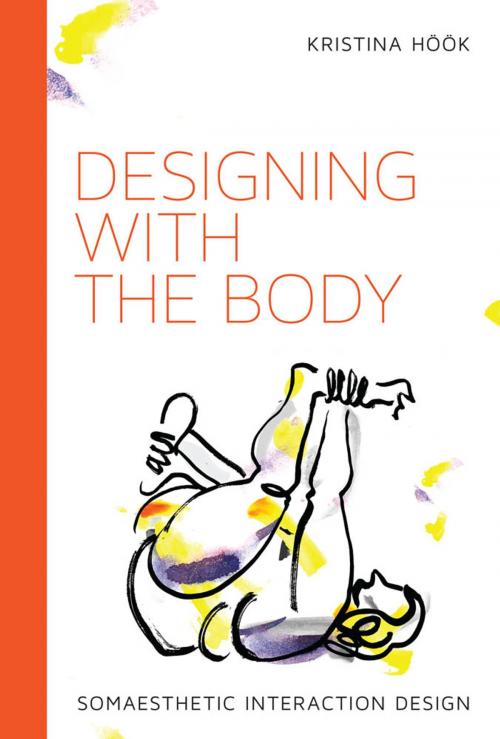Designing with the Body
Somaesthetic Interaction Design
Nonfiction, Art & Architecture, General Art, Graphic Art & Design, General Design, Computers, General Computing| Author: | Kristina Höök | ISBN: | 9780262348331 |
| Publisher: | The MIT Press | Publication: | October 19, 2018 |
| Imprint: | The MIT Press | Language: | English |
| Author: | Kristina Höök |
| ISBN: | 9780262348331 |
| Publisher: | The MIT Press |
| Publication: | October 19, 2018 |
| Imprint: | The MIT Press |
| Language: | English |
Interaction design that entails a qualitative shift from a symbolic, language-oriented stance to an experiential stance that encompasses the entire design and use cycle.
With the rise of ubiquitous technology, data-driven design, and the Internet of Things, our interactions and interfaces with technology are about to change dramatically, incorporating such emerging technologies as shape-changing interfaces, wearables, and movement-tracking apps. A successful interactive tool will allow the user to engage in a smooth, embodied, interaction, creating an intimate correspondence between users' actions and system response. And yet, as Kristina Höök points out, current design methods emphasize symbolic, language-oriented, and predominantly visual interactions. In Designing with the Body, Höök proposes a qualitative shift in interaction design to an experiential, felt, aesthetic stance that encompasses the entire design and use cycle.
Höök calls this new approach soma design; it is a process that reincorporates body and movement into a design regime that has long privileged language and logic. Soma design offers an alternative to the aggressive, rapid design processes that dominate commercial interaction design; it allows (and requires) a slow, thoughtful process that takes into account fundamental human values. She argues that this new approach will yield better products and create healthier, more sustainable companies.
Höök outlines the theory underlying soma design and describes motivations, methods, and tools. She offers examples of soma design “encounters” and an account of her own design process. She concludes with “A Soma Design Manifesto,” which challenges interaction designers to “restart” their field—to focus on bodies and perception rather than reasoning and intellect.
Interaction design that entails a qualitative shift from a symbolic, language-oriented stance to an experiential stance that encompasses the entire design and use cycle.
With the rise of ubiquitous technology, data-driven design, and the Internet of Things, our interactions and interfaces with technology are about to change dramatically, incorporating such emerging technologies as shape-changing interfaces, wearables, and movement-tracking apps. A successful interactive tool will allow the user to engage in a smooth, embodied, interaction, creating an intimate correspondence between users' actions and system response. And yet, as Kristina Höök points out, current design methods emphasize symbolic, language-oriented, and predominantly visual interactions. In Designing with the Body, Höök proposes a qualitative shift in interaction design to an experiential, felt, aesthetic stance that encompasses the entire design and use cycle.
Höök calls this new approach soma design; it is a process that reincorporates body and movement into a design regime that has long privileged language and logic. Soma design offers an alternative to the aggressive, rapid design processes that dominate commercial interaction design; it allows (and requires) a slow, thoughtful process that takes into account fundamental human values. She argues that this new approach will yield better products and create healthier, more sustainable companies.
Höök outlines the theory underlying soma design and describes motivations, methods, and tools. She offers examples of soma design “encounters” and an account of her own design process. She concludes with “A Soma Design Manifesto,” which challenges interaction designers to “restart” their field—to focus on bodies and perception rather than reasoning and intellect.















